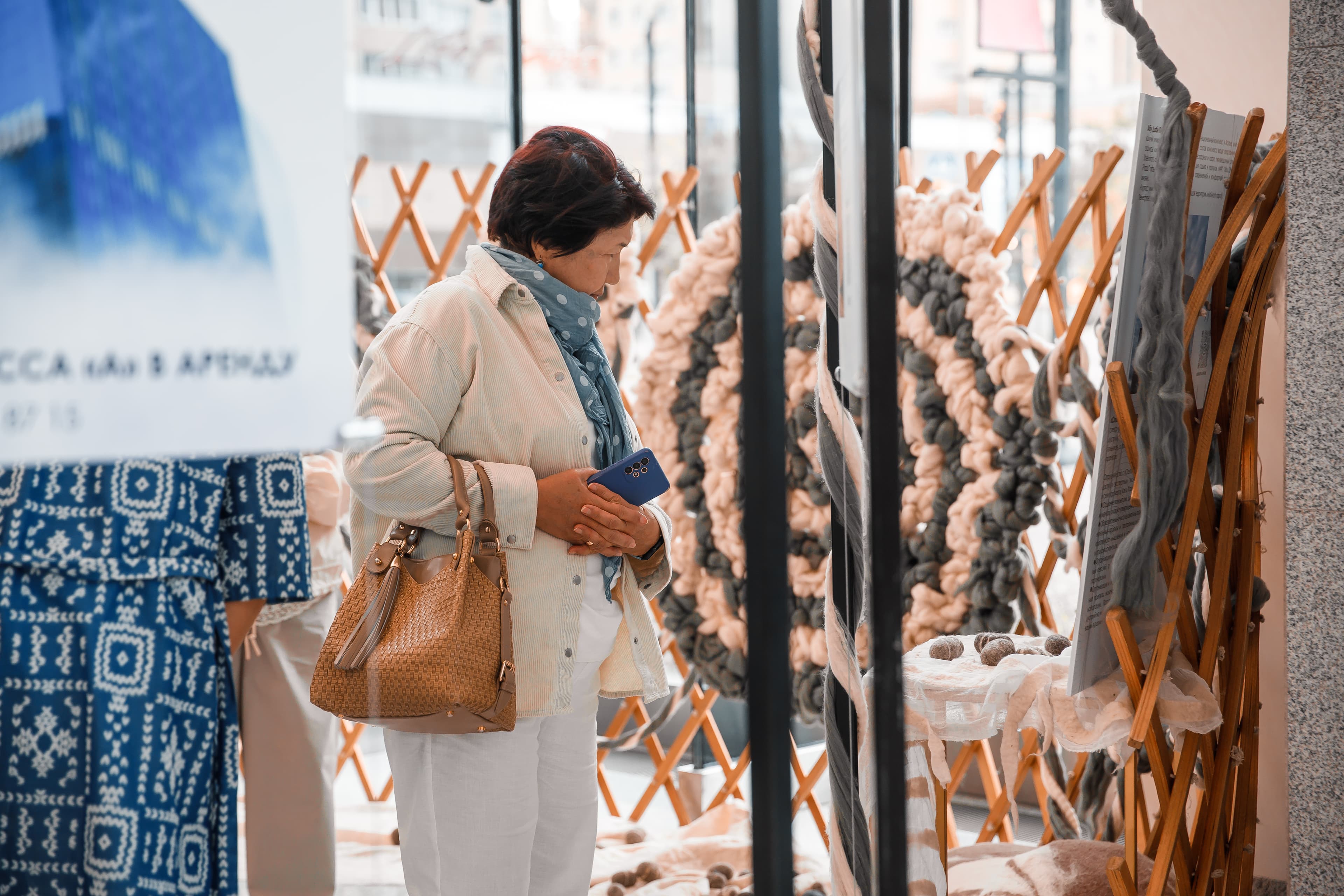The sacral meaning of the yurt in the Kazakh culture
Altynai Tanirbergenova

The Yurt for Kazakh people is not just a dwellin. it is the whole world that reflects their ideas about the universe with each element of the yurt having a deep symbolic meaning that has been passed on from generation to generation.
The structure of the yurt and its symbolism
The yurt represents the universe divided into three levels, which are the upper, middle and lower worlds. These levels symbolize different spheres of existence: the celestial beings, people and evil spirits. And the vertical structure of the yurt emphasizes the significance of harmony between these worlds. Horizontally, the yurt is divided into the sides of the world, which also reflects the social structure of the Kazakh society. Tor, which is a place of honor, was the place for the most respected guests, such as elders or prominent persons. It was always decorated with the best carpets, and the most valuable things were placed behind it, which symbolized the wealth and status of the family.
Ornaments and their significance
The yurt decor served not only an aesthetic purpose, but also was like an amulet. Ornaments depicting animals and vegetation symbolized wealth and abundance. For example, the “koshkar muyiz” (ram’s horns) pattern was a widespread pattern symbolizing strength and prosperity. While creating everyday objects, craftsmen used a lot of patterns reflecting nature, which emphasized the importance of water and food for life.
Shanyrak - a symbol of family and unity
The Shanyrak, which is the central element of the yurt, symbolizes a family and a clan. It binds the “wings” of the yurt thus symbolizing the unity of all family members. Shanyrak was handed down as a family relic and was always treated with special respect. There were rituals related to Shanyrak protection, for example, it should not be overturned, or dropped, and blood on the shanyrak was considered a bad sign.
The Shanyrak also symbolizes the sky, while its connection with the yurt marks the horizon. Many important oaths and rituals were often held just under the Shanyrak, which emphasized its sacral significance.
Door - the boundary between the worlds
The door of the yurt separates the inner world from the outer world at the same time symbolizing the well-being of the family. Traditionally, the bride’s family made the door for the yurt, while a groom brought the jambs and the threshold. That emphasized the importance of living together and responsibility for the welfare of the family. There are many omens associated with the door, for example, one should not step on a threshold, as it may attract bad luck. The door, like the shanyrak, serves as a protection and a symbol of family unity.
Conclusion
Thus, the yurt for the Kazakhs is not just a dwelling, it is a complex system of symbols and meanings reflecting their worldview and cultural traditions. Each element of the yurt, from the shanyrak to the door, carries a deep sacral meaning that continues to live in the hearts and minds of the Kazakh people. The sacral meaning of the yurt is the reflection of the universe in each element The yurt, being a symbol of the Kazakh nomadic culture, is not just a dwelling, but the whole world in which every element has a deep sacred meaning. Since ancient times, the yurt embodied the universe, reflecting the Kazakhs’ ideas about the structure of the world. In this context, the shanyrak, kerege and other parts of the yurt become not only functional but also symbolic elements carrying important cultural and spiritual meanings.
3/12/2025